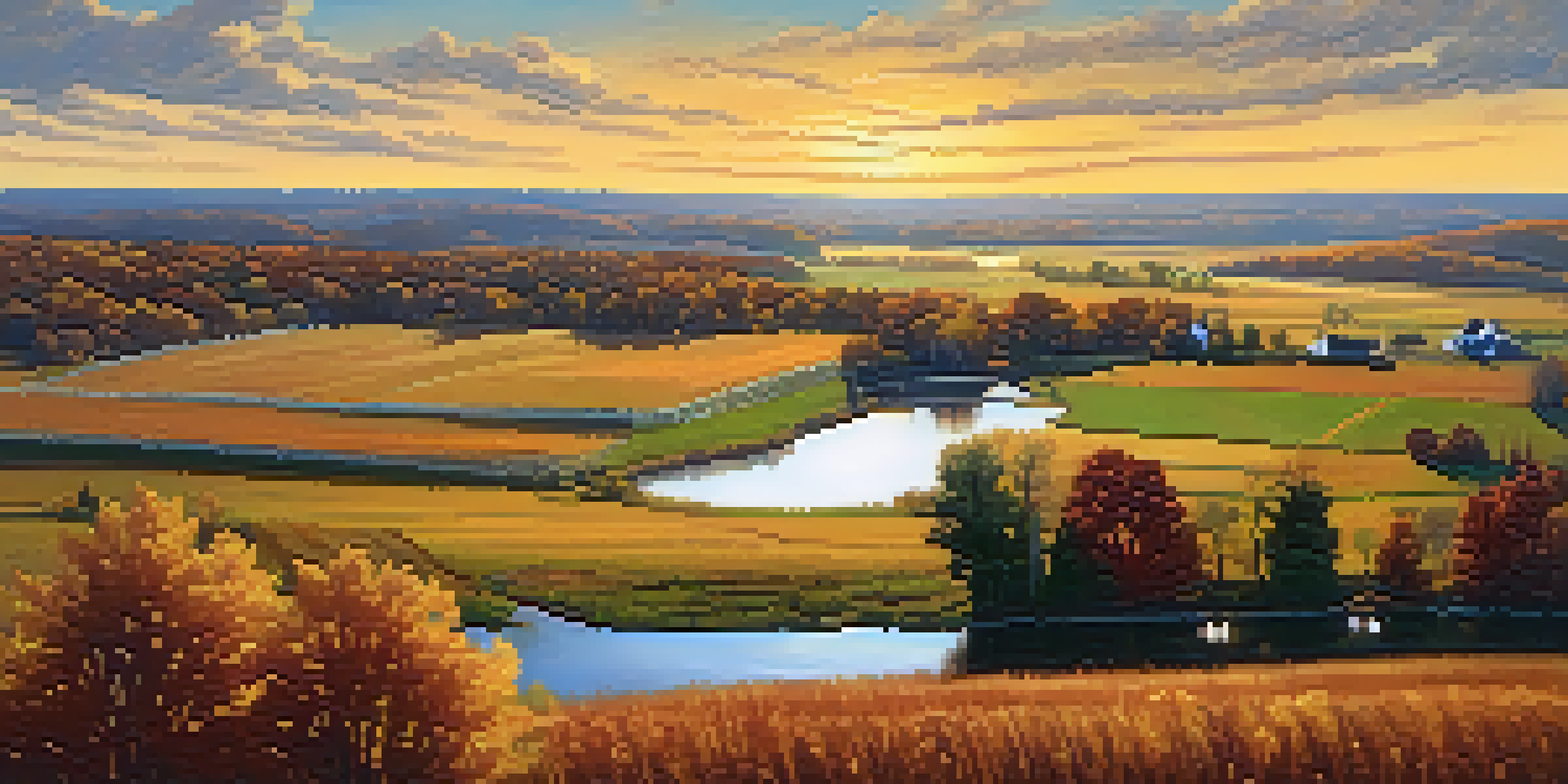Urban vs Rural Missouri: Geographic Differences in Climate

Understanding Missouri's Geographic Diversity
Missouri, often referred to as the Show-Me State, is a place where urban and rural landscapes paint a vivid picture of geographic diversity. The state is divided into various regions, each showcasing its unique topography, from rolling hills to flat plains. This diversity significantly impacts climate patterns, influencing everything from temperature variations to precipitation levels. Recognizing this geographic variety is crucial for understanding how urban and rural areas experience climate differently.
Urban Climate: The Heat of the City
Urban areas in Missouri, such as St. Louis and Kansas City, often experience what is known as the 'urban heat island' effect. This phenomenon occurs when buildings, roads, and other infrastructure absorb and retain heat, causing cities to be warmer than their rural counterparts. For instance, summer temperatures in St. Louis can soar several degrees higher than nearby rural areas, leading to increased energy consumption for cooling. This distinctive feature of urban climates highlights the challenges that city dwellers face when it comes to heat management.
Urban Heat vs. Rural Coolness
Urban areas in Missouri experience significantly higher temperatures due to the urban heat island effect, while rural regions enjoy cooler and more stable climates.
Rural Climate: The Calm of the Countryside
In contrast, rural areas of Missouri tend to enjoy more stable temperatures and cooler breezes. With fewer buildings and more greenery, these regions can effectively dissipate heat, creating a more temperate environment. This means that while urban residents might be sweltering, those in rural parts like the Ozarks may be enjoying a refreshing breeze. This difference not only affects daily comfort but also impacts agriculture, as rural farmers can benefit from the cooler conditions for their crops.
Precipitation Patterns: Urban vs Rural
Precipitation patterns also vary significantly between urban and rural areas in Missouri. Urban regions often face stormwater runoff issues due to impervious surfaces, which can lead to localized flooding. Conversely, rural areas with more vegetation and open land tend to absorb rainfall better, reducing runoff and promoting groundwater recharge. The differences in how these areas manage precipitation can have lasting effects on both water quality and availability for communities.
Precipitation Management Differences
Urban regions face stormwater runoff challenges due to impervious surfaces, whereas rural areas benefit from better rainfall absorption and groundwater recharge.
Seasonal Variations: A Tale of Two Climates
Seasonal variations further underscore the differences in climate between urban and rural Missouri. In cities, the heat retained during summer can create longer heat waves, while winters may feel more frigid due to wind chill factors. On the other hand, rural areas often experience more pronounced seasonal changes, with cooler winters and milder summers. This distinction can affect not only lifestyle choices but also how people prepare for seasonal activities, from farming to outdoor recreation.
Impact of Urbanization on Local Climate
Urbanization plays a significant role in shaping local climates throughout Missouri. As cities expand, more land is developed, leading to increased surface temperatures and altered precipitation patterns. This can create a feedback loop where rising temperatures encourage more urban development, further intensifying climate impacts. Understanding these dynamics is essential for city planners and residents alike to mitigate adverse effects and promote sustainability.
Climate Adaptation Strategies Needed
Innovative strategies that promote collaboration between urban and rural communities are essential for addressing climatic disparities and enhancing resilience in Missouri.
Climate Adaptation Strategies: Bridging the Gap
Addressing the climatic disparities between urban and rural areas in Missouri calls for innovative adaptation strategies. Urban centers can incorporate green spaces and reflective surfaces to combat the urban heat island effect, while rural areas can focus on sustainable farming practices to enhance resilience. Collaboration between urban and rural communities can lead to shared resources, knowledge, and strategies that benefit both environments. By working together, Missourians can create a more climate-resilient state.
Conclusion: Embracing Missouri's Climatic Contrasts
In conclusion, the geographic differences in climate between urban and rural Missouri are not just academic; they have real-world implications for residents’ daily lives. From the heat of the city to the cool countryside, understanding these contrasts is key to fostering a more sustainable future. As Missourians embrace their unique climatic landscapes, they also pave the way for innovation and cooperation that can benefit the entire state. By acknowledging and adapting to these differences, Missouri can thrive in an ever-changing climate.